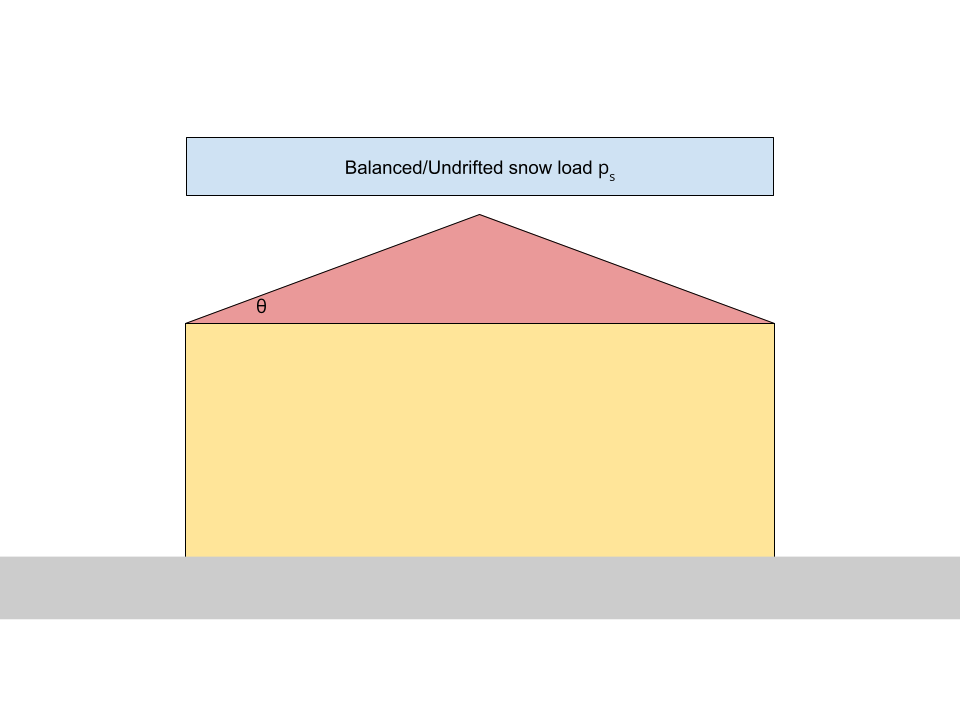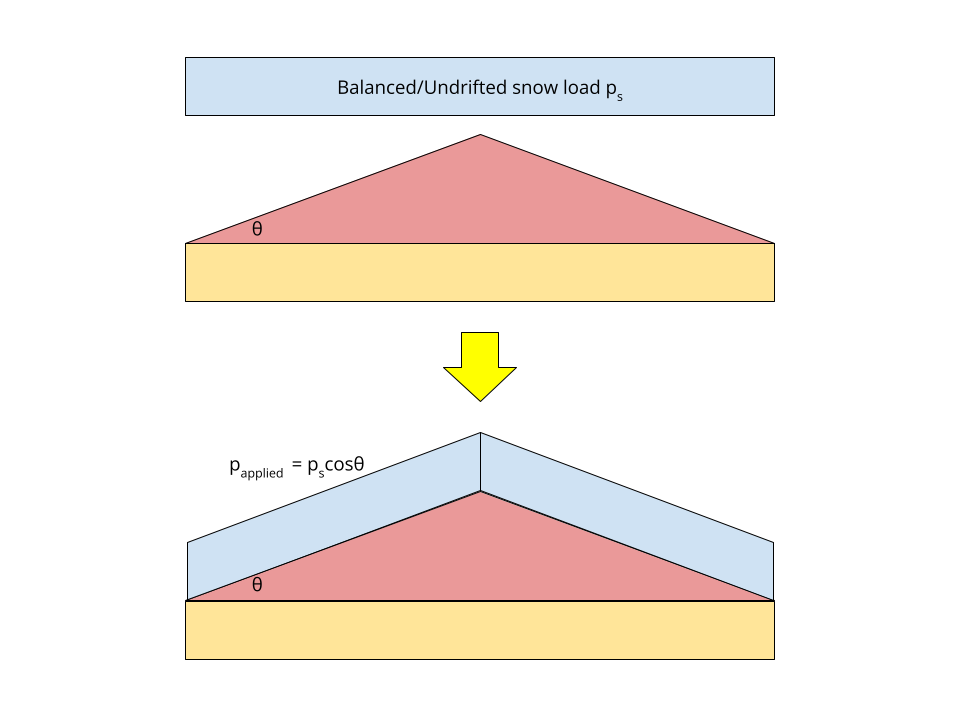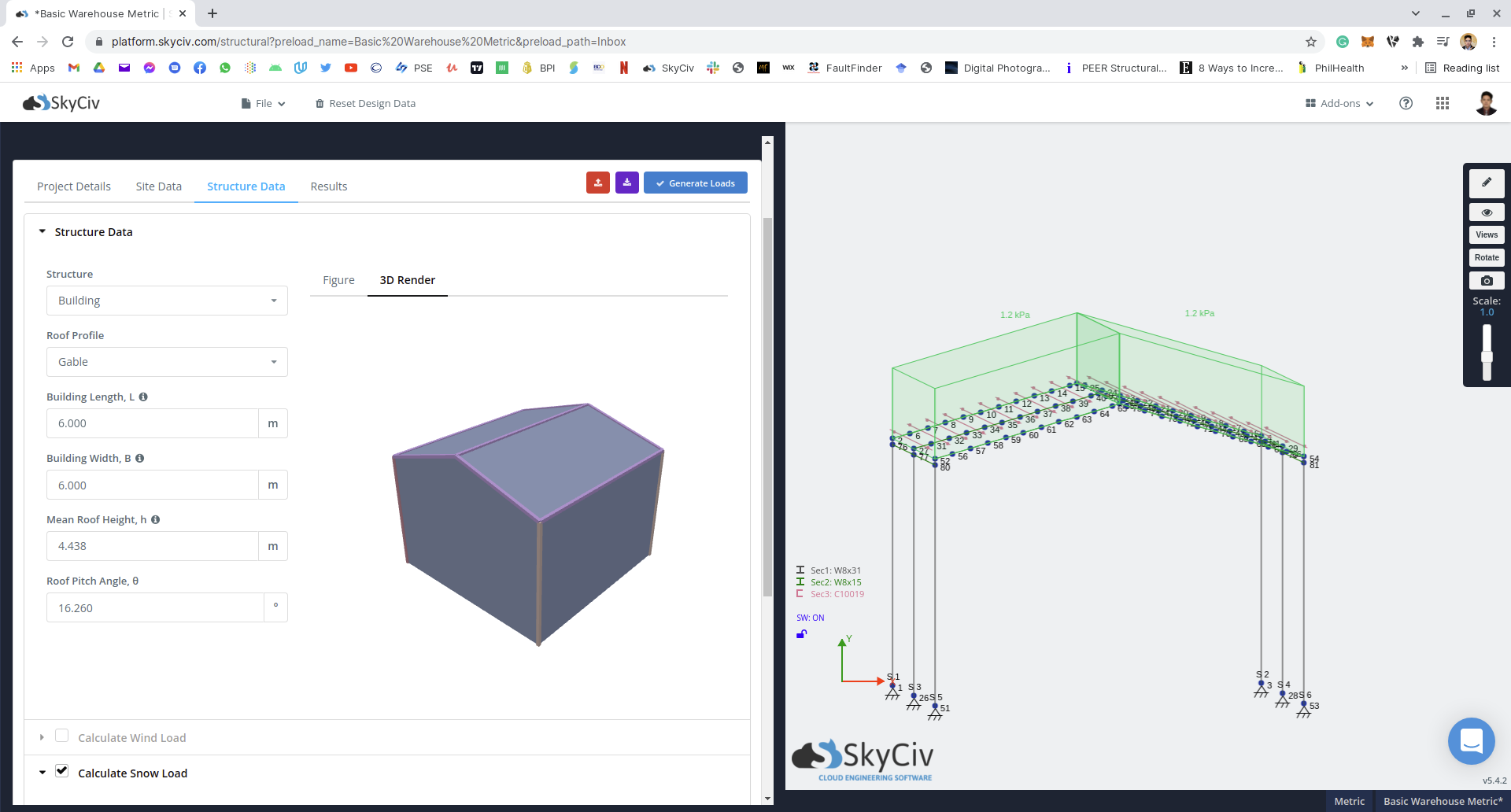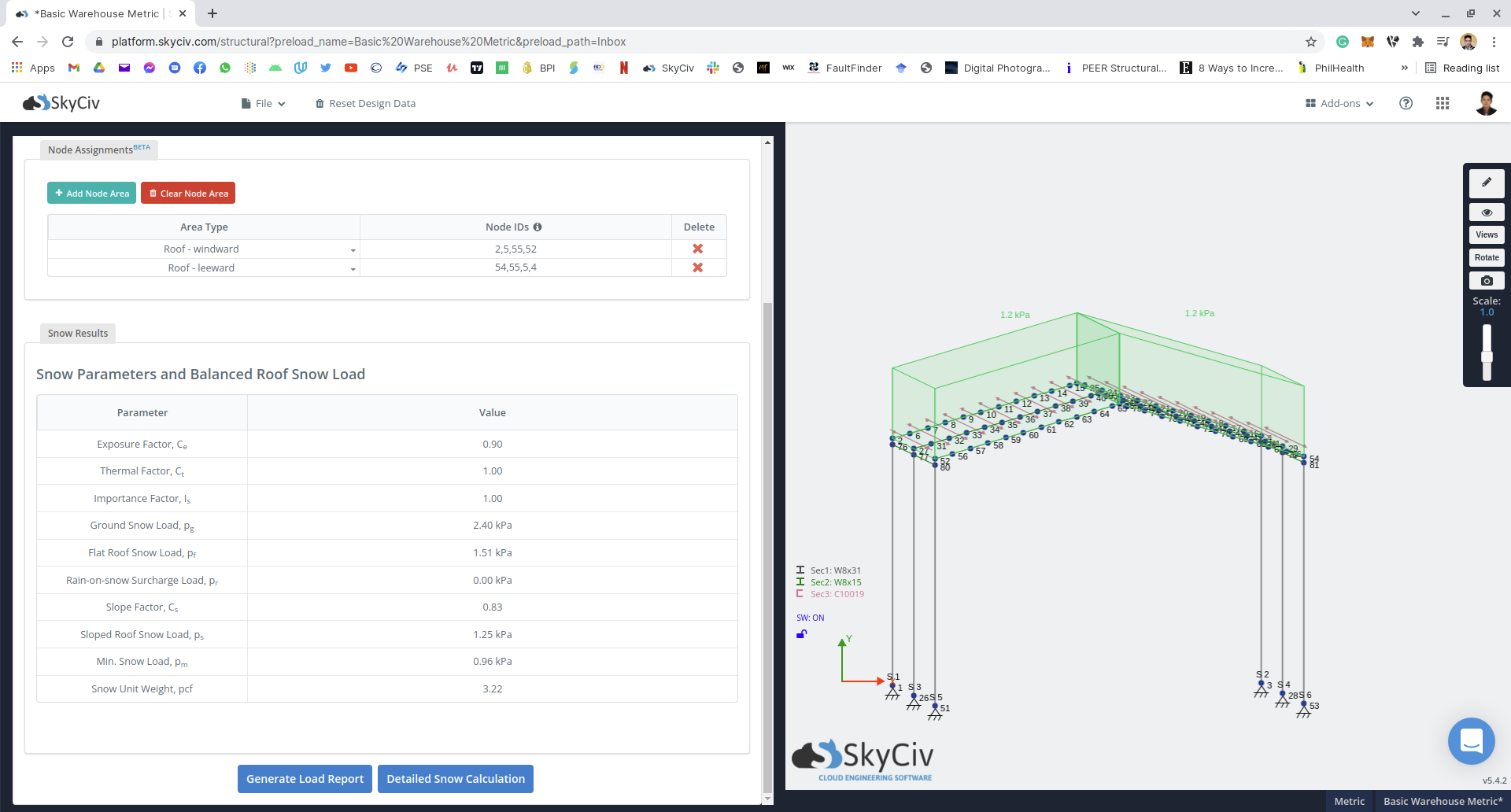Gebruik van de belastinggenerator voor sneeuwbelastingen geïntegreerd in S3D
Bij het berekenen van sneeuwbelastingen, Er wordt altijd aangenomen dat de gebalanceerde of niet-afgedreven sneeuwbelasting op het dak wordt toegepast op de horizontale projectie van het dakoppervlak, op dezelfde manier waarop belasting onder invloed wordt toegepast. 
Om de sneeuwbelasting op het dak aan te brengen, we moeten de druk omzetten \({p}_{s}\) door het te vermenigvuldigen met de waarde van cosθ. 
SkyCiv Load Generator gebruiken in S3D
Voor Professionele accountgebruikers, u hebt toegang tot de belastinggenerator via de gebiedsbelastingsecties in S3D. Van de module, het genereren van de gebalanceerde/ongedrift sneeuwbelasting \({p}_{s}\) wordt automatisch toegepast zolang de dak loef- en lijwaartse knooppunten zijn gedefinieerd als de Knooppunttoewijzingen tafel.

De regel voor het definiëren van de loef- en lijwaartse knooppunten van het dak wordt hieronder weergegeven:


Daarom, de bijbehorende toegepaste sneeuwbelasting wordt hieronder weergegeven:

Van dit model, de gebalanceerde/onverstuifte sneeuwbelasting \({p}_{s} = 1.25 kPa\) wordt geconverteerd door de cosinuswaarde van de te vermenigvuldigen Dakhellingshoek θ gelijk aan 0.9603. Daarom, de overeenkomstige sneeuwbelasting op het dak is gelijk aan \( p = 1.20kPa\). Gebruik van open gebiedsbelasting, het wordt vervolgens op het dakoppervlak van het model aangebracht. Voor het onevenwichtige/afgedreven geval, handmatige invoer is noodzakelijk. Deze functie is alleen beschikbaar voor ASCE 7-10, ASCE 7-16, NBCC 2015, EN 1991, en AS/NZS 1170.
Bouwkundig ingenieur, Product ontwikkeling
MS Civiele Techniek
Referenties:
- American Society of Civil Engineers. (2017, juni). Minimale ontwerpbelastingen en bijbehorende criteria voor gebouwen en andere constructies. American Society of Civil Engineers.


